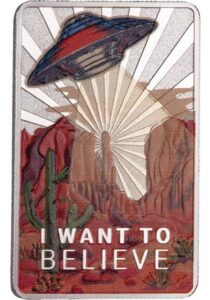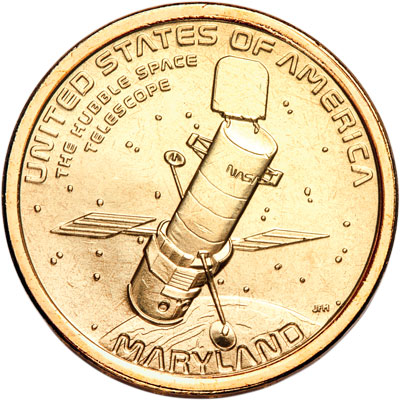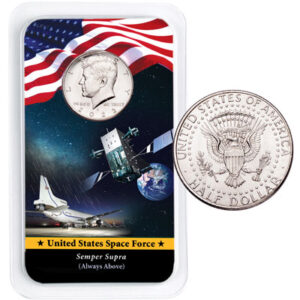Shoot for the Stars
Last updated:For as long as humans have existed so has our fascination with the night sky. The mystery of what lies beyond the stars has captured imaginations for generations and is found today in pop culture, space exploration, and even on our coins!
The beginning of April marks Global Astronomy Month and it is going to be a busy one with the highly anticipated 2024 eclipse. Of course, there are plenty of other astronomical events to look forward to this month as well! April will see the new moon on the 8th, Lyrids meteor shower on the 22nd-23rd and full moon on the 23rd.
But what is Global Astronomy Month?
In 1973, Global Astronomy Day was created by Doug Berger, who was President of the Astronomical Association of Northern California. It’s counterpart – Global Astronomy Month – was created shortly afterwards to foster excitement around astronomy by putting telescopes in urban areas.
With the 2024 eclipse right around the corner, let’s take a look at some of the coins inspired by the final frontier.
Under the Open Sky

Not all astronomical themed coins are from the 21st century. Stargazing goes back thousands of years – as do the coins inspired by them.
Take this silvered bronze coin from the reign of Emperor Diocletian (A.D. 284-305) for instance. The reverse depicts the Roman god, Jupiter. As the undeniable king of the gods, he ruled the sky with an iron fist often administering judgement with a bolt of lightning.
A formidable ruler described in early Latin literature as sub Iove or “under the open sky”, Jupiter held the secrets of the sky that the Romans were determined to unlock.
And work on unlocking them they would.
While not the first empire to try and understand the night sky – the Shang Dynasty in China was among the first to study astronomy – the Roman Empire helped expand working knowledge of the universe. In 129 B.C. the Greek astronomer Hipparchus had detailed the coordinates for 850 stars in his star catalog. Claudius Ptolemy added onto Hipparchus’ work in 140 C.E. with the Almagest which, thanks to its mathematical prowess, would go on to be the leading star catalog for the next 1,500 years.
Today the Romans foray into space can still be found with the names of the planets in our solar system: Mercury, Venus, Mars, Jupiter, Saturn, Neptune and (the highly controversial) Pluto.
Keep Your Eyes on the Stars
“Keep your eyes on the stars and feet on the ground,” President Theodore Roosevelt counseled once. He couldn’t have known then the way that space would end up shaping the country over the latter half of the 1900’s and into the next century.

In recent decades the stars above have continued to capture our imaginations. Following the discovery of an Unidentified Flying Object (UFO) in 1947 in Roswell, NM alien encounters have captured the minds of millions for over 75 years! In fact the White Mountains of New Hampshire can even claim their own alien abduction with the case of Barney and Betty Hill. The idea of extraterrestrials has paved the way to a classic and beloved genre – Science Fiction! From loveable sidekicks to evil villains and timeless heroes, space has played an important backdrop in some of the most iconic moments in pop culture.
Of course, fiction isn’t the only place we’ve made strides!
Look at the work of astronomer, Annie Jump Cannon – the woman who classified the stars. Nicknamed the “census taker of the sky,” the Delaware native developed the Harvard spectral system and over the course of her lifetime she would classify 350,000 stars.
Dr. Sally Ride made history on June 18, 1983 as the first American woman in space. Selected out of 8,000 applicants in 1978, Dr. Ride trained for five years before she and three of her classmates were assigned to their first mission. After completing two missions with NASA, she joined the University of California, San Diego where she taught physics as well as directed the University of California’s California Space Institute.

It’s not just mankind who has stepped forward into the night sky though! Where would we be without the tools to take us there?
Telescopes like the Hubble Space Telescope and the James Webb Space Telescope have allowed a closer glimpse at the stars above. While the Hubble has been in space since 1990, the idea for a telescope orbiting the planet had been discussed since 1946. American astrophysicist, Lyman Spitzer, proposed the launch of a telescope into space that would allow for better images of the universe than those taken on the ground. While it would take time – and money – to get these telescopes off the ground, the information gathered and images taken have dazzled the world. As products of international relationships between NASA, the European Space Agency and Canadian Space Agency, pictures from both telescopes are available to the public online.

But what about getting to space? Without the launch of space shuttles like the Columbia it would impossible! This milestone shuttle was launched into orbit in April of 1981, bringing a new era of reusable spacecraft. Over the course of Columbia’s time as a space shuttle, it would go on to successfully complete 27 missions and ultimately 1 unsuccessful mission in 2003.
As progress in space has continued to be made over the last forty years, the need for defense has also. On December 20, 2019 the United States Space Force was established as the country’s newest military branch since 1947. With the motto, always above, the U.S. Space Force is dedicated to protecting American infrastructure in space such as satellites that transmit information to cell phones, the Internet, GPS, and more.
Thanks to advances by people and technology alike we’re fortunate to be able to enjoy the depths of space from behind our computers!
Meet Me at… Midnight?
April 8th is right around the corner and so is the highly anticipated solar eclipse!
The last time this rare event was seen in the United States was on August 21, 2017 and is not expected to be seen again in the U.S. until 2044. The 2024 eclipse is shaping up to be quite the occasion and here in northern New Hampshire we’re especially excited as we’re in the path of totality.
What is totality? Well in the case of the upcoming solar eclipse it’s when the moon completely blocks out the sun from Earth’s view. This ends up causing the sky to become dark with a sunrise/sunset appearance and (weather-permitting) a view of the sun’s corona to become visible as a white halo.
As a solar eclipse can only happen during a new moon, it makes sense that April’s new moon will be on the 8th following the 2024 eclipse, allowing for this once-in-a-lifetime experience for many. If you’re fortunate enough to be able to see the eclipse make sure to grab your solar viewing glasses and look up to see what has been captivating imaginations for generations!
Will you be celebrating the 2024 eclipse? What is your favorite astronomy themed coin? Tell us in the comments below!
This article was written by Rachael R.
A bibliophile with a love of history, Rachael enjoys spending her time with her nose buried in a book learning about the history behind the coin.
Sources:
Rutger. “Masters of the Stars: The Ancient Greeks” Accessed January 30, 2024 https://www.underluckystars.com/blog/masters-of-the-stars-the-ancient-greeks/
Rutger. “Masters of the Stars: The Romans” Accessed January 30, 2024 https://www.underluckystars.com/blog/master-of-the-stars-the-romans/
Voisey, Jon. “The Historic Discussion of Ptolemy’s Star Catalog” Accessed January 31, 2024 https://www.universetoday.com/159885/the-historic-discussion-of-ptolemys-star-catalog/#:~:text=From%20the%20time%20of%20its,longitude%20and%20latitude)%20and%20brightnesses.
Carter, Jamie. “Chinese Astronomy: A Guide to Ancient Stargazing in China” Accessed January 31, 2024 https://www.skyatnightmagazine.com/space-science/chinese-astronomy
Alexander, Kerri Lee. “Annie Jump Cannon” Accessed January 31, 2024 https://www.womenshistory.org/education-resources/biographies/annie-jump-cannon
NASA. “Sally Ride (1951-2012)” Accessed January 31, 2024 https://science.nasa.gov/people/sally-ride/
Tillman, Nola Taylor. “Hubble Space Telescope: Pictures, Facts & History” Accessed January 31, 2024 https://www.space.com/15892-hubble-space-telescope.html



